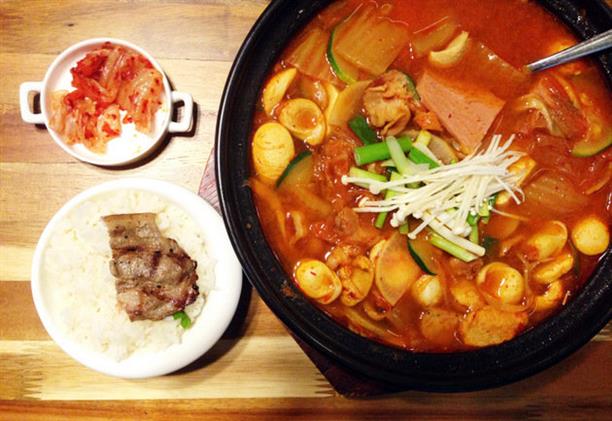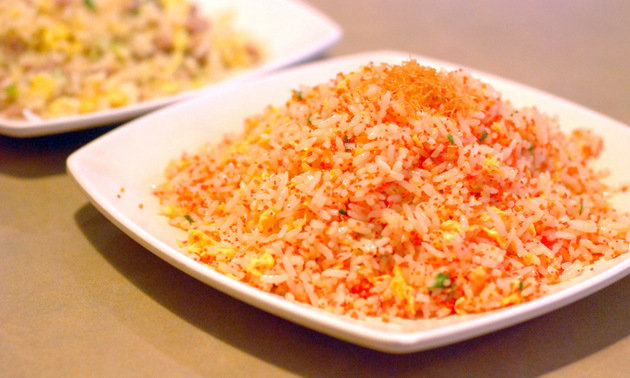
The Leftover Cuisine
By Elaine Ng - Wednesday, May 15, 2013
A long time ago, before refrigeration existed, the luxurious thought of keeping and storing leftover food was only a dream concept. Leftovers, especially from extravagant festivities, had to be eaten as soon as possible before they spoiled. The poor, on the other hand, had to make the best out of whatever they could scrape together.
So, with a touch of creativity from cooks and chefs, these originally doomed leftovers – often boosted with a touch simple imagination–are saved from wastage and resurrected into brand new dishes.
We now freeze our leftover bits for longer periods for delayed consumption. And with a thoughtful plan and idea, humble leftovers can now be transformed into something new altogether and enjoyed by choice.
Fried rice would probably be the first of such leftover cuisine that would come to the mind of a Singaporean. Or fans of Yangzhou fried rice (shrimp, scrambled egg and Char Siu fried rice), Indonesian Nasi Goreng (spicy fried rice usually served with a sunny side up and Keropok), and Thai Khao Pad (fried jasmine rice in spicy Thai sauce) among many other renditions.
Depending on the mix of leftover ingredients and the condiments used as well as how the cook matches them, there are countless variations of fried rice, whether dark brown from soy sauce, bright yellow from beaten eggs or reddish-orange from masala paste.
In fact, the common secret to a good plate of fried rice besides wok hei is to use rice leftover from meals the day before. Overnight rice (stored in the fridge to rid extra moisture) are known to be better for frying compared to freshly cooked rice, which is too moist for the purpose.

Another Chinese-inspired leftover creation that comes to mind, especially for the American Chinese, would be the Chopsuey. In a literal sense, the dish in Cantonese means odds and ends, and in Mandarin translates to a mix of animal offals and entrails.
The earliest mention of chop suey may be pinpointed to the authentic dish of Tsapseui (random scraps) from Taishan in Guangdong province, home of most Chinese immigrants to California. Likewise, the common American Chinese version refers to a dish of leftover vegetables and meat stir-fried together, and typically served in a thickened starchy sauce.
There are various storiesas to how Chinese immigrants may have created this slapdash dish – whether by drunken gold miners hungry after work, the sloppy appeasement ofangry railroad workers or by a chef of visiting Chinese official Li Hongzhang of the Qing dynasty eager to create something to suit the palates of the Chinese but done with American interpretations.
Why hey, there’s even a version by the Monkey King himself. In the classic novel coincidentally named Journey to the West, Sun Wukong issues a lion-monster of an enemy the threat of a “chop suey” pot meant for cooking its liver, entrails and lungs.
While none of the above colourful stories could be proven for sure, what we are certain is that the Chopsuey has since grew to have a place in many Chinese restaurants in the United States.
Quite removed from the Asian staple of rice, our potato-loving English friends have their own take of leftover cuisine – Bubble and Squeak.
This traditional British dish is made up of leftovers from Sunday roast, consisting of mainly potatoes and cabbage, and is named as such due to the bubbling and squeaking sounds emitted as the concoction cooks in a pan.
Popular during the Second World War, where rationing ruled the day and food was scarce, Bubble and Squeak is now usually eaten for breakfast or supper as a side dish where meat is rarely used.
The Scottish Rumbledethumps and Irish Colcannon are similar, employing the main ingredients of mashed potatoes and boiled cabbage mixed with desired toppings such as cheddar cheese.
Also born of wartimes is the one-pot wonder – Budaejjigae – which may now be found on almost every menu of any Korean restaurant.Literally translated to army stew, this dish was originated during the Korean war where resourceful Koreans combined the extra rations left behind in US army bases such as Spam (luncheon meat), sausages and sliced cheese with the traditional spicy Kimchi stew. As such, Budaejjigae is also known as the Johnson Tang (soup) as named after then American President Lyndon Johnson, who oversaw the Korean conflict.

Now, even in this current relatively peaceful times and where we may be able to safely store food for a longer time, food wastage should and could still be minimised with some creativity. How do you rescue leftovers in your kitchen? What are some of your favourite leftover creations?


